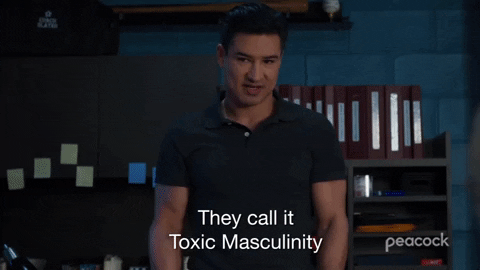In my How Writers Read course with Professor Kopp, we read four books over the fall semester. So imagine a Writing Arts student getting anxious about reading. I was one of those students who liked to read but read a few selections, such as I read Speak by Laurie Halse Anderson ten times, or I stuck to reading short stories on Wattpad, a self-publishing website where anyone could be a writer. I read what I already knew because that was comfortable for me. I picked the romantic stories that were a page long because it gave me butterflies, which felt good. It was hard for me to read new books because I get anxious when I do not know what will happen. For example, when I began to read Speak in my freshman year of high school, I could tell that the main character, Melinda, had likely experienced something awful before the time of her narrating her story. Instead of discovering what had happened to her by reading the narrative. I rushed over to Wikipedia and read the plot there. I allowed myself to be trapped by anxiety as I fell into the addiction of reading ahead, reading the book online, or skipping scenes in a movie to get to one in particular. Even on Wattpad, I felt so invested in one book that I read it all night or lost sleep because that was all my mind could think about.
Reading ought to be enjoyable, but in this way, I have made it more of a burden to be so careful with selecting stories that would not bring me to experience the anxiety I dreaded. So the question for me to ask is: how do I break this pattern? How can I grow as a reader when I tended to avoid triggering the anxiety that drives me to find out how the narrative ends. The problem was that I knew how it ended, and I stopped reading. What is going on here is that I most often read mimetically. I read for the imitation of reality in the narratives I read, where my bodily sensations and emotions correspond to what the narrator or protagonist experiences. It seems like I didn’t read for the thematic or synthetic dimensions of the narrative.

What was at stake for me was I wanted to find ways to cope with my anxiety better as I read. I wondered if reading thematically, reading for the ideas expressed in the narrative, or synthetically, reading for the textual elements, the “writing itself,” that tells the story, would help my anxiety. Before the class, I thought I was too sensitive, too empathic. That is, I often take on the emotions of the main character and feel them as if they were my own. However, I had a breakthrough as I realized I could read thematically or synthetically since I practiced reading a new way.
First, I want to talk about The Bell Jar tells the story of a young woman, Esther Greenwood, who suffers a mental breakdown while striving to find her way in the adult world while coping with the stigma of mental illness and the psychiatric treatments that appeared to make her condition even worse.
The narrative begins with Esther having won a summer internship for Ladies’ Day magazine in New York City. She has a passion for writing, and her boss, Jay Cee, mentors her. However, Esther struggles with depression while comparing her past to the present, contrasting her memories of her relationship with Buddy Willard, who she thought would be her future husband. The struggles she faces in the present. Throughout the book, readers saw Esther confronting unformed prejudices concerning virginity, marriage, and kids. These prejudices clashed against the current reality and led to her suffering. What I meant by that was how her mother and Buddy’s mom often preached about men and women saving their virginities until marriage, and Esther discovered that this is not quite the case in actual life. Buddy’s infidelity shattered this naive point of view.
However, Esther seemed to be on a spiral as she tried to form her own opinions, such as: when she was thinking about the type of man to lose her virginity to, she said,
“the more I thought about it the better I liked the idea of being seduced by a simultaneous interpreter in New York City…” and Esther said this after she learned Buddy had an affair with a waitress, and that made her think how men and women were different on who could sleep around and who couldn’t. “
(80)
Esther’s way of thinking correlated with the premise of the book. In his book Story, chapter 6, “Structure and Meaning” Robert McKee defines the premise of a story to be “ the idea that inspires the writers’ desire to create a story”: a question that an author wanted to answer by writing a book about it (112). I noticed the pressure felt about saving her virginity until marriage. Why was it such a big deal? I began to think that the premise was, what if a girl is too focused on her virginity? Still, I knew that the novel was not only about that, and there was much to unpack. I looked back at my notes and realized that I added how Esther would judge others’ appearance. For example, in chapter one, Esther went to a club with her friend, Doreen, and met two men, Lenny and Frankie. Frankie asked Esther to dance, and she said,
“The thought of dancing with that little runt in his orange suede elevator shoes and mingy T-shirt and droopy blue shorts coat made me laugh. If there’s anything I look down on, it’s a man with a blue outfit. Black or gray, or brown, even. Blue just makes me laugh. ‘I’m not in the mood.’ I said coldly…”.
(11-12)

Does that lead me to the second premise of what if a depressed young woman judges others? Esther, to me, seemed a little judgmental; however, my group leader, Angelina, and I examined the other subject matter that happened in the book. We found common ground on the social norms and how that created a lot of pressure for Esther. You might be wondering what kind of pressure she dealt with, well, there was views of marriage and virginity and the freedom of sex in the novel, and Esther had opposite ideas about them. In the fifties, which was the decade that the pressure of being a perfect woman meant to save your virginity until marriage, marry well, and have kids.
Esther described the other girls, who were only in NYC to find a man and marry, as, “…and they were all going to posh secretarial schools like Katy Gibbs, where they had to wear hats and stockings and gloves to class, or they had just graduated from places like Katy Gibbs and were secretaries to executives and junior executives and simply hanging around in New York waiting to get married to some career man or other…” (Plath 4).
Esther was there to learn about writing, and she was keen on following the rules that the other young girls were. Even when proposed by Buddy Willard, a boy she was steady with but grown to hate, she said,
“ ‘I’m never going to get married.’ ‘You’re crazy.’ Buddy brightened, ‘You’ll change your mind.’ ‘No. My mind’s made up.’ ”
(93)
So, Angelina and I came up with the premise being, what if trying to be the ‘perfect woman’ causes a psychotic break? But now, I wonder if it’s, what if trying to be ‘normal’ causes you to be abnormal?
With the premise figured out, we had to identify the controlling idea. Mckee defined that as something “may be expressed in a single sentence describing how and why life changes from one condition of existence at the beginning to another at the end” (115).
What would the controlling idea be in The Bell Jar? It could be aspiring to be normal will cause to feel a part of something. To go along with the controlling idea. We would have to find a counter controlling idea, which has a negative outlook of the premise. I believed it to be, being normal will only make you feel trapped, and that will make you suffer.
Here was how the ideas happened in The Bell Jar. In chapter six, Buddy told Esther he lost his virginity over the summer with a waitress. Esther realized that Buddy and the waitress had sex about thirty times, and she felt betrayed by him. When they were going steady, Esther said, “he kissed me and said I must go out with lots of boys, he made me feel I was much more sexy and experienced than he was and that everything he did like hugging and kissing and petting was simply what I made him feel like doing out of blue, he couldn’t help it and didn’t know how it came about” (70). The controlling idea at play here as Esther felt normal because Buddy wanted her, and she started to find her place was with Buddy.
Esther felt sexy, perfect, and valuable by Buddy’s advances, yet to have him snatch it from underneath her feet as Buddy revealed he was not pure. Although, he, and his mother, preached that men and women should keep their virginity until marriage. Esther realized he was a hypocrite and said, “What I couldn’t stand was Buddy pretending I was so sexy and he was so pure when all this time he’s been having an affair with that tarty waitress and must have felt like laughing in my face” (71). That was when the counter idea came in as Esther felt inadequate, for she was still a virgin.
But thanks to Buddy, Esther finds power in the freedom of sex by getting a diaphragm implanted, a method of birth control. Esther thinks to herself, “I am climbing to freedom, freedom from fear, freedom from marrying the wrong person, like Buddy Willard, just because of sex…” (Plath 223). Here, that was the controlling idea as Esther tried to be perfect, but to only find her way to accomplish those feelings of normal again. She found her place in the world of an independent woman that was free to choose who to sleep with by having birth control. Instead of being concerned about being pure, she was able to feel sexy without a man.

Notice the difference between controlling and counter ideas? With the control, Esther felt freedom when she got the diaphragm. She felt less pressure to choose who to sleep with and not wait for marriage, as Esther may have regretted picking the wrong husband. The controlling idea is about trying to follow ideals set by others. Yet, only for you to be abnormal by forming your opinions, and that led Esther to find her path in the world. The counter had Esther feeling low about herself. It was she who compared herself to Buddy, who was free to sleep around. But Esther, being a woman, was not allowed. If Esther did, then she would be called a slut. As in a perfect world, a woman would wait.
To show how the ideas would look throughout the novel, the following is a narrative value graph, which has critical moments from the book to show the different charges of the text move between positive and negative.
To learn about the genre of the book and intertextual codes, which propped me to examine the way Esther tried to find the truth behind saving your virginity until marriage. A code that deals with finding the truth is the hermeneutic code.
Silverman defined this as “the desire for closure and ‘truth.’ However, this code provides not only the agency whereby a mystery is first suggested and later resolved but several mechanisms for delaying our access to the desired information,”
(257)
That correlates with Esther wanting to know her place and if losing your virginity before marriage is wrong.
She recalled when her mother sent her an article about purity, Esther said, “Now the one thing this article didn’t seem to me to consider was how a girl felt. It might be nice to be pure and then marry a pure man, but what if he suddenly confessed he wasn’t pure after we were married, the way Buddy Willard had? I couldn’t stand the idea of a woman having to have a single pure life and a man being able to have a double life, one pure and one not.” There Esther said if she could not find a pure man when he was 21, she would not be pure herself (81).

Another occasion was when she told her therapist, Dr. Nolan, a woman, about the article, and she said, “Doctor Nolan waited for until I was finished. Then she burst out laughing. “Propaganda!” she said…” (222). After their conversation, Esther got a diaphragm with the help of Nolan.
But there’s an element known as “jamming” in hermeneutic code, and it was described as “an acknowledgment of the apparent failure of the hermeneutic activity, usually because of the exhaustion of all available resources (the death of a key witness, the destruction of vital evidence, someone’s stubborn refusal to talk, etc.), and is intended to induce in the reader a frenzy of epistemophilia,” (Silverman 261). As I read about jamming, I asked myself what the word ‘epistemophilia’. I looked it up, and Merriam-Webster defined it as, “the love of knowledge’ (1). That reminded me of the spiral Esther went on. Esther found out she could not attend the summer writing class she wanted to get in (114). Afterward, she had a hard time writing and reading, so it seemed that Esther struggled to do the things she loved, and it became dangerous.
For example, Esther asked Teresa, who was the family’s doctor, for more sleeping pills, she said, “ ‘I can’t sleep. I can’t read.’ I tried to speak in a cool, calm way, but the zombie rose up in my throat and choked me off. I turned my hand’s palm up.” (126). As you tell, Esther was struggling during that time as she was not able to do what she loved, which was learning. So, with that in mind, it seems that her mental health and her desire to learn are immensely intertwined with one another.
Brendan’s focused on the semic code, which Kaja Silverman described in “Re-Writing the Classic Text” as “always operates in close conjunction with cultural codes. Indeed, it is to a large degree an adjunct code, defining person and place in ideologically symptomatic ways” (Silverman, 253). That matches well with her declining mental state for Esther’s thoughts were in a dark place for the majority of the book. I would like to add that the code could have been saying about her perception of marriage, kids, and virginity. Esther had different views about those three social expectations placed on women.
I’ve discussed the pressure that Esther felt by the whole stigma of virginity and marriage. But for the third blog, Angelina brought up the possibility that Esther was confused about her sexuality. I found that to be intriguing to talk about since it was the 50s when the story was taking place, and it was hard for the LGBTQ+ community to feel included and safe in that period.
Although I see where Angelina got the idea for that, I remembered a scene where Esther got DeeDee and Joan in bed together, in a non-sexual way. Esther said,
“ ‘I don’t see what women see in other women,’ I told Doctor Nolan in my interview that noon. ‘What does a woman see in a woman that she can’t see in a man?’
Doctor Nolan paused. Then she said, ‘Tenderness.’ That shut me up.”
(219).
It could be that Esther was confused or blocking her true feelings, but I believe it was Esther just admiring independent women. It seems the way that men have treated her affected how she viewed them. For example, there was a difference in how Esther described her friend Doreen that she met in NYC, Esther said, “She was wearing a strapless white lace dress zipped up over a snug corset affair that curved her at the middle and bulged her out again spectacularly above and below, and her skin had a bronzy polish under the pale dusting powder” (7).
Now compare how she portrayed Doreen to Lenny, as Esther said, “had a big, wide, white toothpaste-ad smile,”(8). Esther seemed to represent the men with a lot of imagery or imagination, but she described Doreen as a Greek sculpture. She even compares Doreen to Buddy as,
“But he didn’t have one speck of intuition. Doreen had intuition”
(7).
Perhaps, the men around her disappointed her, and she found comfort in the women around her. It reminded me of the symbolic code, which is binary opposites. Silverman described it as, “unresolvable oppositions. The cultural codes, which are extremely numerous and heterogeneous, to a very large degree, subsume all the other categories…” (241). Think of it as women vs. men, or for Esther, it could be Esther vs. Buddy, Esther vs. Dr. Gordon, and Esther vs. Marco.
The men in life brought her down as often he made her doubt herself, mostly Buddy. As he called poetry dust, said she would forget about writing after she has kids, and called her crazy when she turned down his marriage proposal.

That goes with cultural codes, as Silverman explained that “cultural codes function to not only organize but to naturalize that field- to make it seem timeless and inevitable” (274). It’s normal for men to make women doubt themselves like how Buddy did, and her first psychologist, Dr. Gordon, who didn’t pay attention, and Esther called him conceited (129). As I said before about Esther trying to fit in, perhaps she talked about independent women better than men because she wants to be like them.
Angelina presented a network of controlling values for The Bell Jar, which is composed of a controlling and counter value with their own positively charged purpose and negatively charged context. She believed, “the context of controlling value was, distinguishing yourself from others will lead to suffering and loneliness, and its corresponding purpose, suppress your thoughts and conform to others’ expectations in order to be fulfilled in life”. Esther often hides her true feelings to help herself fit in.
But what if the context was about being perfect, as talked about in my blog? Would it still fit? Let’s try, so the context would be, letting your imperfections out to the world will guess you to be an outcast, and the purpose would be, being perfect will make you happy and fit into the mold that society had created for you. Would that work?
Well, Angelina came up with again, she wrote,
“the context here presents itself as, Operating within an imposed set of expectations will destroy you, and the corresponding purpose is, Remove all inhibitions around being different and you will be able to lead a fulfilling life.”
(5)
I agree with that, would add that it could be changed to be to where the context was, squeezing yourself to be in that perfect mold will crush you, and the purpose would be, breaking that mold will set you free. Both of our contexts and purposes have the same ideas but are written differently. You can see how it would fit, for Esther as she tried to fit in, and it almost crushed her, but she broke the mold by turning Buddy’s proposal and getting a diaphragm.
With the rhetoric of narrative, in Sierra’s blog, she used the same terms I’m using. However, I will be making my argument and evidence to talk about Esther’s narration of her story started as if she was a reliable reader in the first chapter. It got hard to tell what was present time as Esther recollected her memories.
For example, I picked a scene where Esther pretended to be an orphan named Elly Higginbottom from Chicago while on a date with a sailor. But she freaked out when she thought she saw Buddy’s mom, and it was only a random lady, Esther, who said,
“The woman approached and passed by without a look or a nod, and of course it wasn’t Mrs. Willard. Mrs. Willard was at her cottage in the Adirondacks.
I fixed the woman’s receding back with a vengeful stare.
‘Say, Elly…’
‘I thought it was somebody I knew,’ I said, ‘Some blasted lady from this orphan home in Chicago.’
The sailor put his arm around me again.
‘You mean you got no mom or dad, Elly?’
‘No.’ I let out a tear that seemed ready. It made a little hit track down my cheek.
‘Say, Elly, don’t cry. This lady, as she means to you?’
‘She was…she was awful!’”
(132-134)
Strange how she lied to someone and pretended to be a whole another person. A term used in class is ‘inauthentic resident reader,’ which Professor Kopp defined as someone resistant to the narrative, meaning a reader will not submit to it but will question it.

I flipped to that type of reader as before I was a capable reader, which James Seitz defined it in “A Rhetoric of Reading” as, “who not only has the ability to ‘follow’ the text but also the ability to jump ahead of it” (146). A reader obeys the text without doubting the narration. To me, it seemed that submitting to the text, in the beginning, because there is no reason not to. I was a capable reader by I believed the book would end with Esther committing suicide, or it would be in the middle of the book. Still, as she went back and forth from her memories to the present time with her being home for the summer or at the ward, I questioned if Esther was a likable narrator. Therefore, that made me become an inauthentic resident reader as it was hard getting her story.
The narration style of Esther for Sierra had an interesting thought, which I agree with as she said that Esther was a narrative audience, which Peter J. Rabinowitz explained in “Truth in Fiction: A Reexamination of Audiences” as “[an audience that] believes the narrator, accepts his judgments, sympathizes with his plight, laughs at his jokes even when they are bad” (134). Suggesting that we know Esther was not the most reliable narrator or perfect. However, readers can still find her to be funny or entertaining. As an inauthentic resident reader, I read what she said about Buddy carefully, as I felt her frustration. To me, it was as if Esther was one of my friends ‘spilling the tea’ on a guy she used to like but for him to only disappoint her.
Though Esther was not a reliable narrator, she admitted, in a way, who she was as, towards the end of the story, she said, “How did I know that someday . . . the bell jar, with its stifling distortions, wouldn’t descend again?”(Plath 241). I perceived that Esther accepted her depression and knows it will never go away, but be with her forever.
To summarize, The Bell Jar by Sylvia Plath was a story of a young woman named Esther Greenwood, who was battling depression. All the while trying to thrive in the adult world that she recently enter. The book is packed full of codes and narration styles that people could argue about for years. The book was memorable to me as I learned how what my group members took from it.

Throughout the semester, I learned that I was able to read outside the comfort of mimesis. To quote from Professor Kopp’s website, “to reflect on your growth during the semester, highlighting and narrating key moments of developing your reading practices and roles in conversation with the methodological texts, class discussions, and your selected readings, “meaning to examine my role in the class and the accomplishments I had with myself as a reader and a writer (1). I was able to read thematically or synthetically as I don’t take the main character’s emotion like I used to. It is not 100% effective, but I feel it was a bearable amount of emotion. I read stories about serious issues such as mental health, suicide, and assault. I did not read the plot online before I read any of those books, okay I almost did for Slade House, but I got myself and didn’t.
I wasn’t expecting to break my habit of spoiling the story for myself and being less anxious. I am excited to read more outside of my box and read new stories! I grew to appreciate the narrative as I didn’t spoil the ending for myself, and I don’t need to anymore. I felt the chains that I placed on myself broke, and I’m finally able to read stories without the anxiety of not knowing the stories ending, and feeling the emotions of the main character to the extreme. I can read without any stress because I pushed myself not to read any of the story plots online, but I read the book to know the ending.
It’s funny to look back at how I was nervous taking How Writers Read because I know reading was a struggle for me. But looking back on it, I can see that this class was what I needed to be a better reader, and it opened my eyes to the type of reader I was. As I said previously, I thought I was too sensitive or empathic. That was why I was strict on what to read or not as specific topics could trigger me, and I felt trapped in a way as I was not in control. It was my anxiety that controlled me like I was a puppet.
I learned that my read for was mimetically, and it’s okay for me to read that why. But, it’s okay to read in different ways, as I read thematically or synthetically. My reading has helped me be better when reading new books as I control my anxiety now, and it’s not the other way around anymore.
Reference
- Published by asakkestad View all posts by asakkestad, Asakkestad, P., Asakkestad, Asakkestad, V., 5, P., Says:, P., . . . (required), N. (2020, November 05). The Power of the Cultural Codes and Controlling Values. Retrieved December 22, 2020, from https://readinglistbygroup5.wordpress.com/2020/11/05/the-power-of-the-cultural-codes-and-controlling-values/
- Published by mooney67rowan View all posts by mooney67rowan, Mooney67rowan, P., Mooney67rowan, Mooney67rowan, V., 30, P., Says:, P., . . . (required), N. (2020, October 29). Trying to Scream in the Void. Retrieved December 22, 2020, from https://readinglistbygroup5.wordpress.com/2020/10/29/trying-to-scream-in-the-void/
- Published by paigestressman View all posts by paigestressman, Paigestressman, P., Paigestressman, Paigestressman, V., 27, S., Says:, S., . . . (required), N. (2020, October 27). To Be Perfect or Not To Be That Is The Question. Retrieved December 22, 2020, from https://readinglistbygroup5.wordpress.com/2020/10/27/to-be-perfect-or-not-to-be-that-is-the-question/
- Published by Sierra Lombardo View all posts by Sierra Lombardo, Lombardo, P., Lombardo, S., View all posts by Sierra Lombardo, 8, A., Says:, A., . . . (required), N. (2020, November 08). The Fig Tree and The Bell Jar. Retrieved December 22, 2020, from https://readinglistbygroup5.wordpress.com/2020/11/08/the-fig-tree-and-the-bell-jar/
- Butler, Robert Olen., and Janet Burroway. “Cinema of the Mind.” From Where You Dream: The Process of Writing Fiction. New York: Grove, 2005. 63-84.
- Campbell, Joseph. The Hero with a Thousand Faces.. Second ed. Princeton: University Press, 1972.
- ___. “The Impact of Science on Myth.” Myths to Live By. New York: Penguin Press, 1972.
- Culler, Jonathan. “Story and Discourse in the Analysis of Narrative.” The Pursuit of Signs: Semiotics, Literature, Deconstruction. Ithaca: Cornell U.P., 1981.
- Gallop, Jane. “The Ethics of Reading: Close Encounters.” Journal of Curriculum Theorizing (Fall, 2000): 7-17.
- Jensen, Michael. “Integrity: Without it, Nothing Works.” Rotman Magazine (Fall 2009): 16-20.
- Mamet, David. “Countercultural Architecture and Dramatic Structure.” On Directing Film. New York: Viking, 1991. 57-66.
- McKee, Robert. “Structure and Meaning.” Story: Substance, Structure, Style and the Principles of Screenwriting. New York: Regan, 1997. 110-131.
- Phelan, James. “Introduction.” Living to Tell About It: A Rhetoric and Ethics of Character Narration. Ithaca: Cornell University Press, 2005.
- Porter, James. “Intertextuality and the Discourse Community.” Rhetoric Review. 5.1 (1986): 34-47.
- Rabinowitz, Peter. “Truth In Fiction: A Reexamination of Audiences.” Critical Inquiry. 4.1 (1977): 121-141.
- Seitz, James E. “A Rhetoric of Reading.” Rebirth of Rhetoric: Essays in Language, Culture, and Education. By Richard Andrews. London: Routledge, 1992. 141-55.
- Silverman, Kaja. The Subject of Semiotics. New York: Oxford UP, 1983.
- Published by asakkestad View all posts by asakkestad, Asakkestad, P., Asakkestad, Asakkestad, V., 15, P., Says:, P., . . . (required), N. (2020, November 15). Complications in the Semic Code. Retrieved December 28, 2020, from https://readinglistbygroup5.wordpress.com/2020/11/15/complications-in-the-semic-code/
- Published by asakkestad View all posts by asakkestad, Asakkestad, P., Asakkestad, Asakkestad, V., 22, P., Says:, P., . . . (required), N. (2020, October 22). The Self Among Audiences. Retrieved December 28, 2020, from https://readinglistbygroup5.wordpress.com/2020/10/22/the-self-among-audiences/
- Published by asakkestad View all posts by asakkestad, Asakkestad, P., Asakkestad, Asakkestad, V., 29, P., Says:, P., . . . (required), N. (2020, October 02). Beginning to Open Doors in Slade House. Retrieved December 28, 2020, from https://readinglistbygroup5.wordpress.com/2020/09/29/beginning-to-open-doors-in-slade-house/
- Published by asakkestad View all posts by asakkestad, Asakkestad, P., Asakkestad, Asakkestad, V., 5, P., Says:, P., . . . (required), N. (2020, November 05). The Power of the Cultural Codes and Controlling Values. Retrieved December 28, 2020, from https://readinglistbygroup5.wordpress.com/2020/11/05/the-power-of-the-cultural-codes-and-controlling-values/
- Published by mooney67rowan View all posts by mooney67rowan, Mooney67rowan, P., Mooney67rowan, Mooney67rowan, V., 10, P., Says:, P., . . . (required), N. (2020, November 10). Good Intentions Are Not Enough. Retrieved December 28, 2020, from https://readinglistbygroup5.wordpress.com/2020/11/10/good-intentions-are-not-enough/
- Published by mooney67rowan View all posts by mooney67rowan, Mooney67rowan, P., Mooney67rowan, Mooney67rowan, V., 20, P., Says:, P., . . . (required), N. (2020, October 20). Code Behind Free Will. Retrieved December 28, 2020, from https://readinglistbygroup5.wordpress.com/2020/10/20/code-behind-free-will/
- Published by mooney67rowan View all posts by mooney67rowan, Mooney67rowan, P., Mooney67rowan, Mooney67rowan, V., 30, P., Says:, P., . . . (required), N. (2020, October 29). Trying to Scream in the Void. Retrieved December 28, 2020, from https://readinglistbygroup5.wordpress.com/2020/10/29/trying-to-scream-in-the-void/
- Published by mooney67rowan View all posts by mooney67rowan, Mooney67rowan, P., Mooney67rowan, Mooney67rowan, V., 8, P., Says:, P., . . . (required), N. (2020, October 08). Temptations of the Reader. Retrieved December 28, 2020, from https://readinglistbygroup5.wordpress.com/2020/10/08/temptations-of-the-reader/
- Published by paigestressman View all posts by paigestressman, Paigestressman, P., Paigestressman, Paigestressman, V., 16, A., Says:, A., . . . (required), N. (2020, October 15). To Know Leads To Danger. Retrieved December 28, 2020, from https://readinglistbygroup5.wordpress.com/2020/10/15/to-know-leads-to-danger/
- Published by paigestressman View all posts by paigestressman, Paigestressman, P., Paigestressman, Paigestressman, V., 25, A., Says:, A., . . . (required), N. (2020, November 24). When Good Intentions Are Ignorant. Retrieved December 28, 2020, from https://readinglistbygroup5.wordpress.com/2020/11/24/when-good-intentions-are-ignorant/
- Published by paigestressman View all posts by paigestressman, Paigestressman, P., Paigestressman, Paigestressman, V., 27, S., Says:, S., . . . (required), N. (2020, October 27). To Be Perfect or Not To Be That Is The Question. Retrieved December 28, 2020, from https://readinglistbygroup5.wordpress.com/2020/10/27/to-be-perfect-or-not-to-be-that-is-the-question/
- Published by paigestressman View all posts by paigestressman, Paigestressman, P., Paigestressman, Paigestressman, V., 8, S., Says:, S., . . . (required), N. (2020, October 06). A Battle of Wit and The Sexes! Retrieved December 28, 2020, from https://readinglistbygroup5.wordpress.com/2020/10/05/a-battle-of-wit-and-the-sexes/
- Published by Sierra Lombardo View all posts by Sierra Lombardo, Lombardo, P., Lombardo, S., View all posts by Sierra Lombardo, 1, M., Says:, M., . . . (required), N. (2020, October 01). Mysterious Case of Ivy and Fox Pins! Retrieved December 28, 2020, from https://readinglistbygroup5.wordpress.com/2020/10/01/mysterious-case-of-ivy-and-fox-pins/
- Published by Sierra Lombardo View all posts by Sierra Lombardo, Lombardo, P., Lombardo, S., View all posts by Sierra Lombardo, 14, P., Says:, P., . . . (required), N. (2020, October 15). All the Way Down. Retrieved December 28, 2020, from https://readinglistbygroup5.wordpress.com/2020/10/14/all-the-way-down/
- Published by Sierra Lombardo View all posts by Sierra Lombardo, Lombardo, P., Lombardo, S., View all posts by Sierra Lombardo, 20, A., Says:, A., . . . (required), N. (2020, November 19). Codes of Faith. Retrieved December 28, 2020, from https://readinglistbygroup5.wordpress.com/2020/11/19/codes-of-faith/
- Published by Sierra Lombardo View all posts by Sierra Lombardo, Lombardo, P., Lombardo, S., View all posts by Sierra Lombardo, 8, A., Says:, A., . . . (required), N. (2020, November 08). The Fig Tree and The Bell Jar. Retrieved December 28, 2020, from https://readinglistbygroup5.wordpress.com/2020/11/08/the-fig-tree-and-the-bell-jar/

Leave a comment